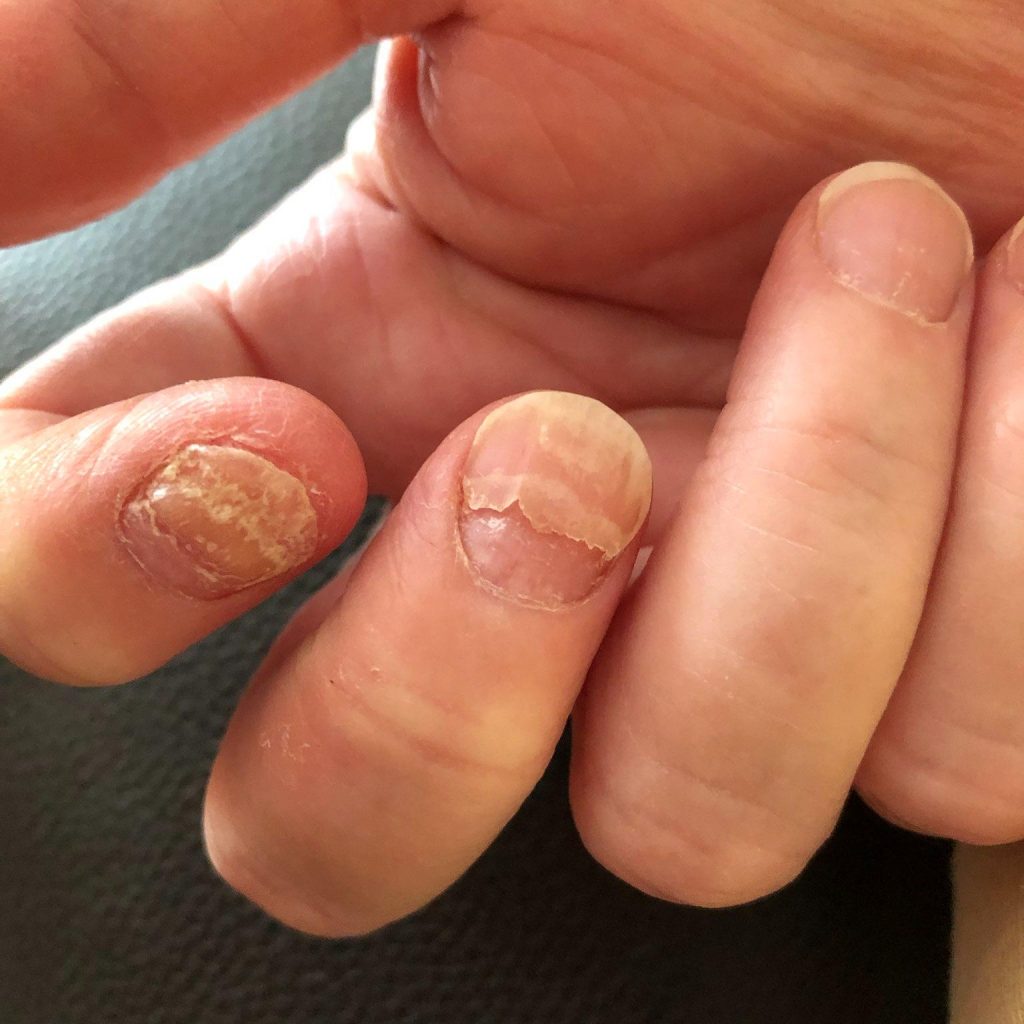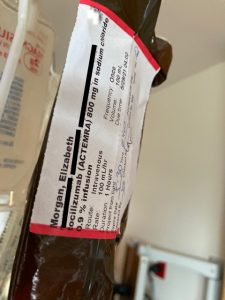I’m nearly finished with cycle 8. For those of you who’ve asked, the side effects have remained the same throughout for me. the situation with my nails has improved, though! They’re not peeling away from the bottom of the nail anymore. Still, I have issues at the tops of the nails. I have to keep them trimmed or they catch on things and tear. They just seem really fragile, splitting and tearing without provocation. The same thing happens to the nails on my toes.
My sense of taste hasn’t changed. I still have little ability to taste certain things. When I can taste something, it’s a bit different than what I’m used to. For example, I can taste sweet things, but there’s an underlying bitterness to it. Some things have no flavor at all. I think I mentioned before that dill pickles have no taste. Mustard is another thing I can’t taste.
I am still having difficulty swallowing. I always need to have water close by at meals to help me swallow certain foods. Sometimes I take pills with yogurt, because that makes them easier to swallow. I completely avoid some foods because they’re just too hard to swallow.
I still have a weird reaction to becoming too warm, whether it’s just the ambient temperature in a place (or outdoors), or I’ve exerted myself doing yard work or something else. What I experience is something I can only describe as being electrical shocks all over my head and upper body. I described it to a friend who has MS, and she said that happens to her, too. She has the same sensitivity and reaction to heat.
Twice, since I started this treatment, I’ve had nausea and vomiting. Usually, I have periods of time during which I feel queasy. I take Zofran or compazine and usually feel better. I haven’t decided which works best for me.
I still have dry mouth issues. The only concern I have about that is how it’s affecting my teeth. I’ll see the dentist on Monday and will find out if anything’s changed in the last 6 months.
Every Other Week!
I was just told today that, starting with cycle 9, I’ll be moving to an every other week treatment schedule. That’s amazing news. The weekly treatment schedule has been trying. I also found out that I had been getting daratumumab just once a month with cycle 8. I hadn’t realized it, but was thinking I had just lost track of when I was getting it. I am looking forward to seeing how the reduction in frequency of administration will improve the side effects I’ve been experiencing.
One thing that will happen, though, is that my talquetamab dose will be increased to make up for the change in schedule. Early on, I experienced acute pancreatitis from talq. My dose right now is something like a quarter of the original dose, I’ll have to come in for labs in the weeks between treatment just to make sure my pancreas is ok.
One of the staff here told me that they know of a patient who had to drop out of the trial for some reason, and that this person had been free of any treatment for 8 months since then. That’s encouraging. It would be nice if this drug could give us some time away from treatment at some point.
Masks
I walked into the cancer center this morning and saw someone with his mask pulled down below his nose and someone else with no mask on at all. Someone else had their mask pulled down to their chin. I realize that nobody wants to have the mask police job, but this is the cancer center. There was a volunteer, clinical staff, and security right there. How can patients and visitors not understand how important it is to protect themselves and others by properly wearing a mask? I’m so disappointed.
I bought a shirt with this graphic. I wish I’d worn it today.



